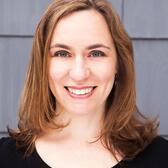The hows and whys of prayer
Lately, I've had a lot of trouble praying. There have been times in my life when I was committed to regular prayer, when I loved to put on my tefillin in the morning and feel the marks they had left on my arm as I went about my activities afterwards. I've had moving experiences of communal prayer, feeling buoyed by the voices rising around me, and of individual prayer, when the sight of something in the world has caught my breath and provoked a spontaneous blessing.
But these days... not so much. Maybe it's because mothering feels like my primary spiritual practice these days. Maybe it's because, when I'm at shul, I spend most of my time in the children's service or the playroom, or jumping up from my seat to take a kid to the potty. (As much as I'm suspicious of blanket exemptions based on gender from any religious obligations, I have to admit there's something to the whole "no positive time-bound obligations" thing for those with small kids. It just shouldn't be only women or all women all the time. But I digress.)
Or maybe I've been having trouble praying because when I open the siddur, the God who usually appears in my mind is "Old Graybeard," as my husband semi-lovingly calls him, and I get distracted wondering how a born-and-bred feminist like myself, who knows with all my heart, with all my soul, and with all my might that God is genderless (or perhaps "gender-full" would be more accurate) can't quite seem to exorcise the old man god.
So I was very interested to see My Jewish Learning's latest video, "How Jews Pray." The video profiles six (mostly young) Jews, who muse about the ways that they express themselves in prayer and to whom they are addressing their supplications. Interestingly -- but not surprisingly -- most seem to relate to prayer primarily as a form of personal meditation. The siddur gets only passing reference. The only person to mention synagogue seems to be Orthodox, and the only synagogue pictured is the Orthodox one where she prays from above in the women's section.
I get why the young folks in the film emphasized personal forms of prayer. Not only is it true to the demographic of the young and hip, this focus also challenges the viewer to get out of the box of assuming Jewish prayer involves the siddur and the synagogue. And certainly, a video that answered the question "How Jews pray" literally, Art Scroll style, with instructions of the "bend at the knee, then bend at the waist" variety, would be much less interesting.
But I also felt that there was something missing, something about the challenges of prayer. These folks (except for the older guy) make it seem like prayer is effortless, organic, and always rewarding. My guess is that many people turn to personal prayer because of negative experiences: they are alienated by the siddur and/or haven't found a home for prayer in a particular community. But these issues aren't addressed in the video. There was also no attention to the ritual aspects, such as the accoutrements of prayer. Do you put on a kippah or a tallit or some other special garb? Do you sit in a particular place or position? If you're praying on your own, wherever you might find yourself, how do you get into a prayerful mode? What makes meaningful prayer possible?
Similarly, while the video assumes the freedom to take certain liberties in prayer -- making up your own words, praying while sitting cross-legged on your couch, etc. -- it doesn't mention the ongoing work (much of it inspired by feminism) of creating new rituals and new liturgy. Sure, some of it is done spontaneously by individuals, but it's also taken years of hard work by poets, rabbis, and communities (among others) to open up the options for prayer and ritual more broadly, so that the palette of Jewish prayer experiences could be more inclusive than what the rabbis and scholars of the previous couple thousand years had been able to imagine.
I'm thinking of people like Marcia Falk, who describes in this text how she began to write her own blessings and, in these audio clips, why and what's at stake.
And I guess that's what I felt is missing from the "How Jews Pray" video. Sure, it reminds us that Jewish practice is varied and idiosyncratic, and by extension, affirms our individual searches for meaning. But it doesn't tell us much about what is at stake, why it matters how Jews pray. Maybe that's the task of a different video, and the comments section here. But, I wonder, is there a "how" without a "why"?







This was very interesting. For me, there are strong associations between mood and my ability to pray. I explore that a bit on my blog, which focuses on the intersection between the traditional morning shacharit prayers and my experienced with depression. Although I think that a lot is lost when we give up on the traditional liturgy, I have not said these prayers daily in quite some time (with the exception of Birkot HaShachar, which I tend to say on the way to work every morning--when I remember), at least partly because they're so hard to connect to. (I will add, though, that I don't have an easier time connecting to more personal Eastern meditative traditions.) It's very hard (for me) to stop, slow down, and connect regularly. So, while I value prayer in the abstract, I mostly fail to utilize it in reality.